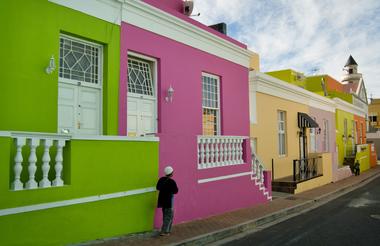Stretching along the border of the Pilanesberg National Park, in the North West Province, Sun City is internationally renowned as South Africa's premier holiday resort and offers a multitude of attractions and activities. With its combination of golfing, gaming, and gambling, as well as world-class hotels, this destination is often referred to as a 'mini Las Vegas in the African bush'. Families can enjoy the impressive waterpark and maze, while nature lovers can explore the incredible Pilanesberg National Park, where they can see all of the Big Five. Make sure to take the fascinating Leeto-Kgolo Village Tour to get an idea of the area's ancient culture. Sun City is also known as the only surf-and-safari destination within a two-hour drive of the landlocked city of Johannesburg.

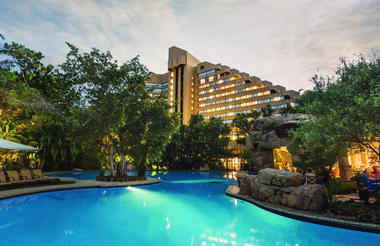




Don’t be surprised if you don’t hear South Africans say Johannesburg. Most of the time, they call this city Jo’Burg, Joey’s, or even Joy’Burg.
In 1884, on a flat, stretch of yellow, sparsely treed veld in South Africa was a farm called Ostrich Springs. Actually, it was called Vogelstruisfontein, but Ostrich Springs is the rough translation. When gold was found in the area everything changed and two years later, the gold-mining town of Johannesburg sprung up. The Whitewater Ridge, or Witwatersrand as it known, is a largely underground geological formation holding the largest known gold reserves in the world. It is also one of Earth’s oldest geological structures. Ten years after the discovery, over 100 000 people of all nationalities called it home. Trees were planted to supply firewood, but more importantly, posts for the mine shaft. Over the years, Johannesburg became, and still is, the largest man-made forest in the world.
The Mponeng gold mine is the deepest operating mine in the world. Its current depth is 3.84km, but there are plans afoot to deepen the shaft to 4.22km. Visiting the gold mines and travelling deep below the earth’s surface is, if you’re not claustrophobic, an excursion not to be missed.
Gold is also the reason why Johannesburg is the world’s largest city not founded on a shoreline, bank of a river, or beside a large inland lake. It is now one of the world’s megacities. Johannesburg is the provincial capital of the Gauteng Province, the wealthiest province in South Africa. Its financial power and global trading make Johannesburg an alpha or power city. It comes as no surprise then that Africa’s Richest Square Mile – Sandton, is here.
Sandton City, an energetic hub of Afro-cosmopolitan glamour is one of Africa’s leading and most prestigious shopping centres. Combining the world’s most desirable brands with everyday leisure and entertainment, it offers an unparalleled shopping experience. It’s Central Business District houses almost 10% of South African companies listed on the Johannesburg Stock Exchange. Right in the middle of Sandton City is Nelson Mandela Square, named after South Africa’s first democratically elected president.
This recent history still vibrates through the fabric of South Africa and nowhere is this more apparent than in Vilakazi Street, Soweto – the large township began life as housing for mine workers. This famous location became home to two Nobel Peace Prize winners, Bishop Desmond Tutu a.k.a. the Arch, and the late President Nelson Mandela. Nelson Mandela’s former home is now the Mandela House Museum. Nearby is the Hector Peterson Museum and Memorial.
To really understand South Africa’s recent history, visit the Apartheid Museum. The exhibits, created by a multi-disciplinary team of curators and creatives, pay testimony to the events and human stories of Apartheid.
And then there’s Constitution Hill. No other South African prison incarcerated the number of world-renowned men and women. People such as Nelson Mandela, Mahatma Gandhi, Joe Slovo, Albertina Sisulu, Winnie Madikizela-Mandela and Fatima Meer. It was fitting then that the Constitutional Court judges, appointed by President Nelson Mandela, chose the Old Fort prison complex as the site of the new Constitutional Court, emphasizing its historical and symbolic importance.
Before gold, the history of the area began millions of years in the past. And the archaeological digs at the Sterkfontein Caves. Only 90 minutes from the city, this UNESCO World Heritage site, which includes the Cradle of Mankind are another fascinating excursion. So far, the Cradle has revealed more fossils of early hominids than any other site on Earth. You can learn more about this human history thanks to the award-winning, world-class Maropeng Visitor Centre’s exhibits, displays and archaeological sites.
But it’s not all history and gold. Johannesburg has amazing shops, restaurants, theatre, clubs, and gardens. It’s a city pulsing with life and energy. And if you are there during the rainy season, you might even experience of one of the famous and unforgettable Highveld thunderstorms!
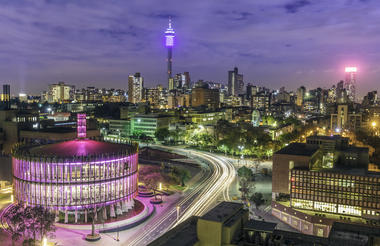
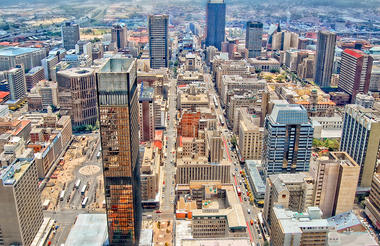
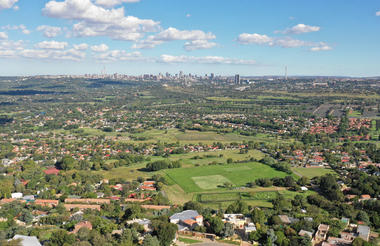
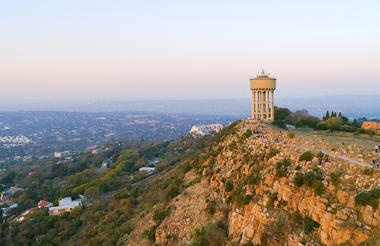


Over the centuries, French, Dutch, English, Malay and African influences have moulded a city replete with natural beauty, an eclectic culinary smorgasbord, and a rich history. This is Cape Town, the Mother City, the oldest city in South Africa. And it’s where modern South Africa began. The seat of the South African parliament is here making Cape town the legislative capital of South Africa.
Cape Town has been called Table Bay, the Cape of Storms, the Cape of Good Hope, The Cape, and directors of the English East India Company described it as ‘the Gibraltar of India’. It finally became known as Cape Town in 1773. The Dutch East India Company had sent Jan van Riebeeck to build a fort, as well as The Company Garden - a vegetable garden and fruit orchard to supply ships on their way to the East and Australia with fresh food. A remnant of the garden still exists in the city today, including one of the original Saffron pear trees which is still bearing fruit. It’s the oldest cultivated fruit tree in the country.
The most prominent and iconic feature of Cape Town is Table Mountain. One of the New Seven Wonders of the world, and part of the Cape Floral Kingdom World Heritage Site, Table Mountain is one of the most popular visitor destinations in Cape Town. From the top, you can see the whole of the city laid out before you, as well the Pacific Ocean lapping at the foot of the African continent, and further along the coast is the Atlantic Ocean.
The mix of ethnic influences have, over the years, created a city with a unique, creative and cosmopolitan flavour unlike any other city in South Africa. All of which can be experienced in the museums, art galleries, spectacular seafood, the Victoria and Albert Waterfront, the Two Oceans Aquarium, the historic and important Robben Island. Wildlife such as great white sharks, penguins, seals, and iconic African wildlife in the nearby national parks. Cape Town also has one of the most colourful and photographed suburbs in all of South Africa – the Bo-Kaap. The narrow cobble streets and brightly painted homes on the slopes of Signal Hill form what was historically called the Malay Quarter. It was where free slaves and Muslims settled in Cape Town and the only place where they were allowed to freely practice their religion.
Combined with architecture that is both historically important and beautiful, vibrant nightlife, world-class beaches and the weather to go with them, as well as the city’s proximity to internationally renowned vineyards, and cheese farms makes Cape Town the city with it all, and more.




